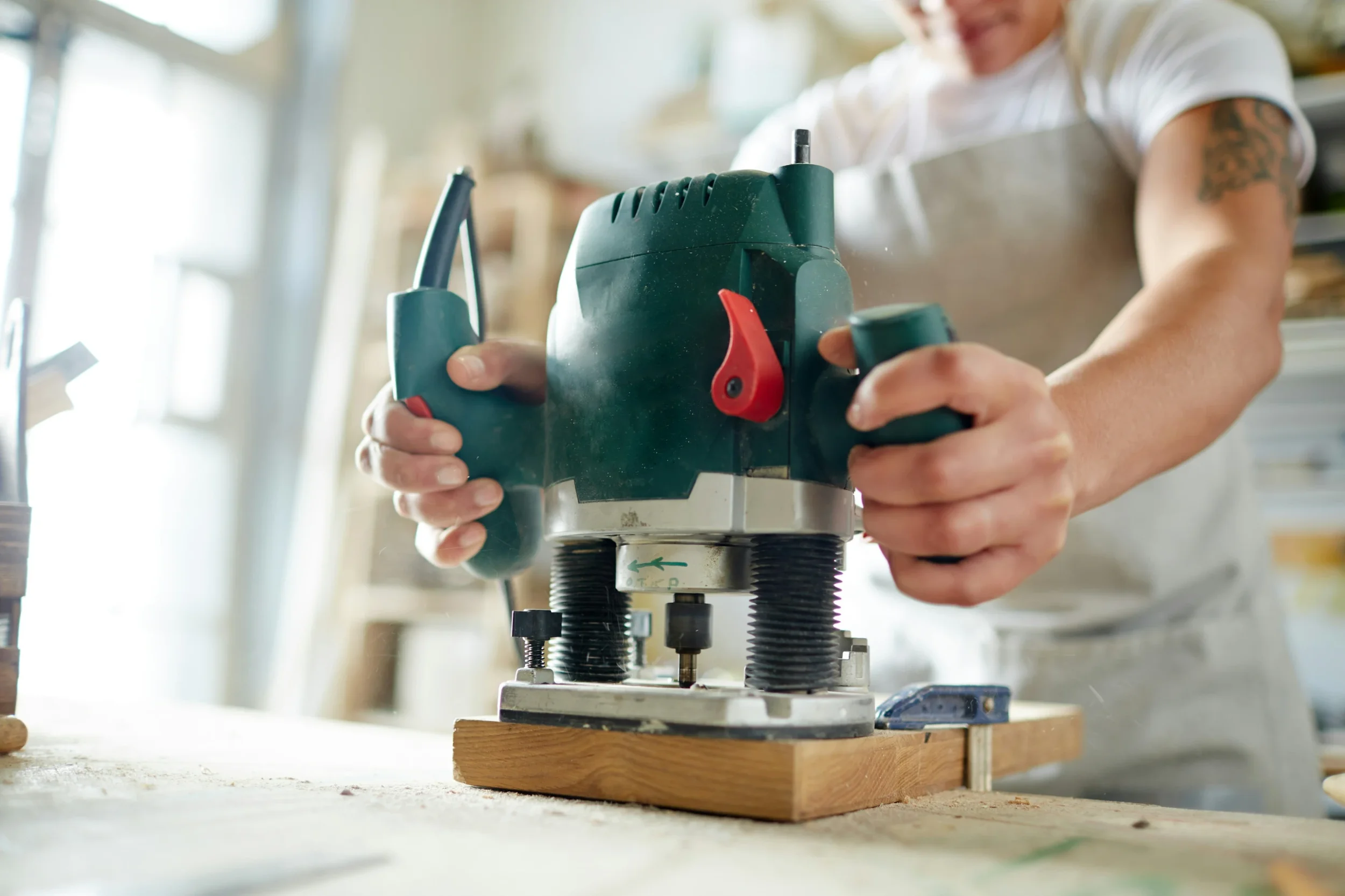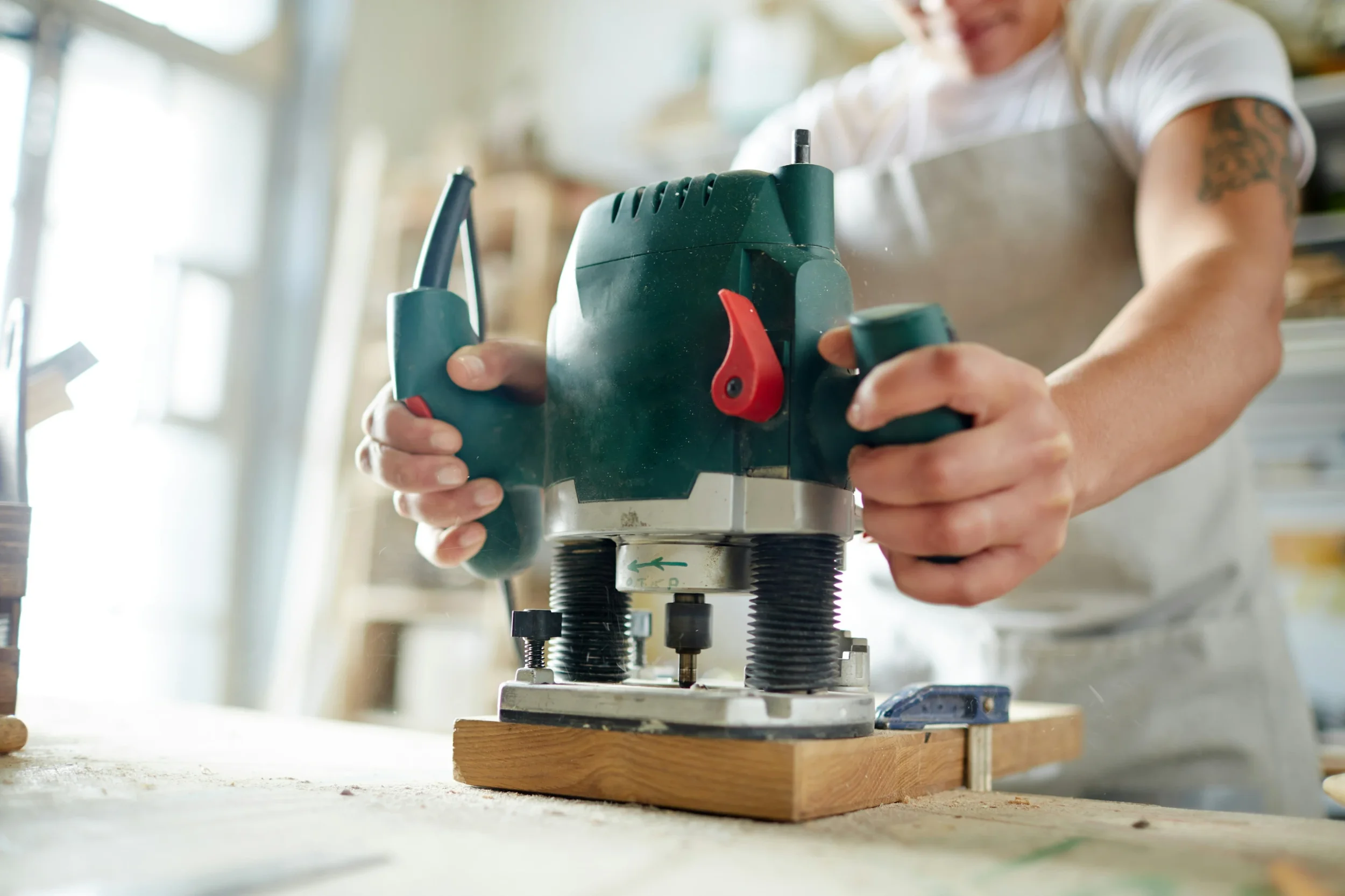Best Wood Routers for Flattening Slabs
Discover the best wood routers for flattening slabs, ensuring smooth, precise finishes for your woodworking and furniture projects.
Flattening a live-edge slab takes power, control, and precision. As wood dries, it twists and cups, leaving uneven surfaces that must be leveled before finishing.
A reliable wood router for flattening slabs gives you that control. Shaving high spots millimeter by millimeter until the slab is perfectly flat.
With so many routers and sled systems available, choosing the right setup can be confusing. This guide explains what to look for, what the woodworking community recommends, and which features truly matter.
1. Why Use a Router for Slab Flattening
Routers excel at flattening because they combine power with adjustability. Mounted on a sled or gantry, the router moves evenly across the slab’s surface, cutting away high spots. The process works on any slab width,something most planers can’t handle and produces a finish ready for sanding or epoxy work.
Compared to planers, routers:
Handle very wide slabs with no snipe.
Offer controlled depth per pass.
Cost less to set up for occasional use.
Allow both manual sleds and CNC automation.
2. Best Router Types for Slab Work
A. Fixed-Base Routers
Fixed-base models are ideal for sled setups because they hold a consistent depth. Once dialed in, they maintain a level cut across wide boards.
Popular examples: DeWalt DW618, Bosch 1617EVS, Triton TRA001.
Pros: Stable, precise, widely supported.
Cons: Slightly less flexible for deep recesses.
B. Plunge Routers
Plunge routers allow you to lower the bit gradually — useful for varying depth cuts or decorative passes.
Popular examples: Makita RP2301FC, DeWalt DW625, Triton MOF001.
Pros: Smooth depth adjustment, easy to remove material in stages.
Cons: Slightly more moving parts; may need base modifications to fit some sleds.
C. Heavy-Duty Routers for Wide Slabs
If you regularly flatten thick hardwood slabs, go for a 3¼ HP or higher motor. Models like the Triton TRA001 or Makita 2301 are well-reviewed for this job. A ½" collet and 2" surfacing bit let you clear large areas quickly without stressing the motor.
3. Router Sled Systems
A router alone isn’t enough — it needs a sled or track system to keep movement level and even.
Community favorites include:
CleanCut Router Sled — praised by Dailey Woodworks for its stability and American-made build.
DIY Plywood Sleds — inexpensive, easy to customize for slab size.
CNC wood router setups — offer fully automated flattening using digital toolpaths for repeat accuracy.
Each approach serves a different shop style. Hobbyists often start with a manual sled, while production shops upgrade to CNC systems for speed and consistency.
4. Router Bits for Slab Flattening
A router is only as good as its bit. The most common choices are:
Carbide insert surfacing bits (1½–2½") – clean, replaceable inserts and smooth finishes.
Fly-cutter bits – aggressive but harder to control on small routers.
Straight 2-flute bits – affordable option for softwoods or test runs.
Always use ½" shanks, reduce RPM to around 12,000–14,000, and take light passes (1/16"–⅛" deep) to avoid burning or chatter.
5. Setup and Technique Tips
Secure the slab firmly — any movement will show up in your cut.
Level both rails of your sled before starting.
Take multiple shallow passes instead of one deep one.
Clean chips between passes to prevent bit drag.
Check flatness with a straightedge before flipping the slab.
Woodworkers on both Reddit and WoodworkingTalk agree: technique and patience are as important as horsepower.
6. Safety Considerations
Flattening wide slabs means long runtime and large bits — treat the setup with respect:
Always wear hearing and eye protection.
Use dust collection or a respirator to avoid fine dust.
Keep hands clear of the bit path and router base.
Let the motor fully stop before adjusting height or removing chips.
7. When to Upgrade to CNC Flattening
If you flatten slabs regularly, automation can save hours per project. A CNC or gantry-style wood router for flattening slabs moves precisely across the workpiece, maintaining even passes without manual effort. It’s also safer for production work and repeat jobs.
Choosing the Right Router Setup for Your Slab Projects
The best wood router for flattening slabs combines power, control, and reliability. Look for at least 2¼ HP, a ½" collet, and variable speed. Fixed-base routers provide the most stability, while plunge routers add flexibility for multi-depth cuts.
As woodworkers on forums and blogs agree, you don’t need the fanciest brand — just a router that runs smoothly, fits your sled or gantry, and can handle the load. Pair it with a solid wood router for flattening slabs system, and you’ll get perfectly flat surfaces ready for finishing every time.





